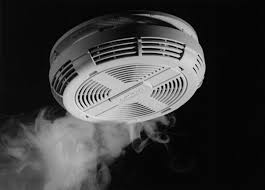Letter: Keep your Smoke Alarm Firing on all Cylinders
To The Editor:
Did you replace the batteries in your smoke alarm after changing the clocks back for Daylight Saving Time? With apologies to Saskatchewan residents, who do not adjust their clocks, safety advocates have often repeated this handy mnemonic device as an easy way to remember that batteries in smoke alarms must be replaced twice a year.
This year’s National Home Fire Safety Week, November 24 – 30, the Canada Safety Council is reminding Canadians to take preventative measures to keep their smoke alarms operational, unencumbered and capable of alerting members of their household in an emergency situation.
As a tool used only in case of emergency, it’s easy to accidentally forget to perform regular maintenance on your smoke alarm. At the same time, unless you’re doing regular tests, the first time you find out it’s not working might also be your last. Smoke and fire are unforgiving, which makes it vitally important to ensure your smoke alarm is in working condition.
The test button on most smoke alarms is effective to ensure function of the sound and that it’s receiving power. But what about its ability to sense and detect smoke? This is why it’s important to regularly test your smoke alarm using real smoke. The Canada Safety Council recommends testing once a month using the test button and once a year by lighting a match and holding it a few inches below the smoke alarm. Take care not to hold it too close or you risk damaging your alarm.
If you hear the alarm, you know your alarm is functioning properly. If you don’t hear the sound ring out, replace the batteries and try again. If your alarm is connected electrically to household circuits, double-check to ensure the fuse is working correctly and try again. If neither of these steps help, replace the unit.
You need a smoke alarm on every level of your home. It’s preferable to keep them near the kitchen and sleeping areas, as well as high fire hazard areas (e.g., near the fireplace.) A smoke alarm near the kitchen may be triggered occasionally when you’re cooking at high heats, but don’t disable your alarm – that’s just an indicator that it’s in working condition. Waft the air around the alarm until the alarm stops, or look into purchasing one that has temporary decreased sensitivity settings.
Alarms should be replaced at regular intervals, and should of course be replaced should your current ones become defective or broken. The Canada Safety Council recommends erring on the side of caution and replacing your alarm once every five years.
When purchasing an alarm, consider the types of alarms. Ionization alarms are quicker to detect fast-spreading fires that produce more heat than smoke, while photoelectric alarms react more quickly to smoldering fires that may smoke for hours before bursting into flame. Consider one of each type per floor of your home.
For more specific questions concerning smoke alarms, please call your local fire department or the manufacturer of your choice.
Lewis Smith
Communications/Media Program Coordinator
Canada Safety Council























Comments